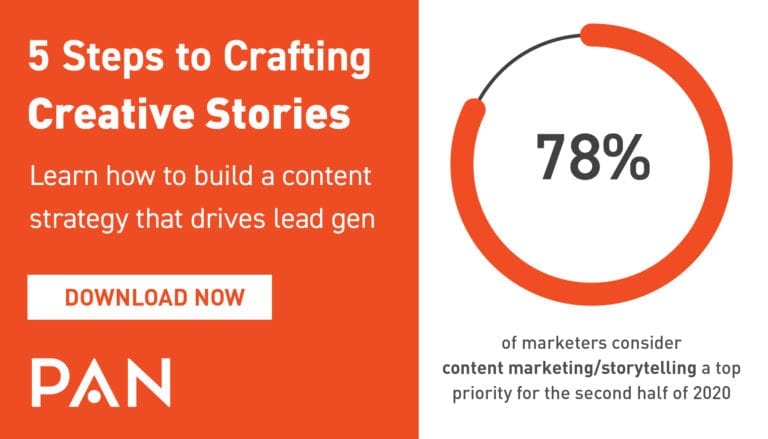The 3 Hottest Topics in PR Research

Roughly 92% of PR pitches begin with a statistic.
Well, not exactly…I made that statistic up. But in the past few years we’ve seen a shift in PR to become more data driven. Whether that’s leveraging a service like Dynata to support a PR campaign, include widely available statistics from reputable sources in a pitch or leveraging market research from a client when trend pitching, most media-savvy pros are incorporating data into their media outreach these days.
However, with that, reporters are also being inundated with data, data and more data. This is leading to “data-fatigue” from many reporters, and it’s getting more and more difficult for PR pros to break through the noise. PAN recently held a media roundtable with reporters from InformationWeek, TechCrunch and TechTarget and across the board they all shared the sentiment that it’s rare to receive reliable and unbiased data. However, when they do, it’s crucial to their stories.
Having good data to offer reporters is a gold mine – both for the PR pro to garner coverage and the reporter to have stats to back up their stories. When creating your next survey or PR campaign involving data, here’s three hot topics to think through.

#1: Include Trending Technologies in Your Research
We’ve all heard the phrase that “every company is a tech company.” Even a giant retail brand like Walmart is heavily investing in technologies like AI and robots to set it apart from competitors like Amazon. So whether you’re a B2B or B2C brand, to captivate audiences and show innovation at the company, consider including trending technologies as a component of your research. That could be artificial intelligence, robotic process automation, data mining, driverless cars, DevOps, and so much more.
When thinking through how to include technology in your research, one good place to start is what the future of it will look like. How will consumers interact with the brand in two, five and even ten years from now? What do consumers expect in that time from a technology standpoint? Not only will this provide some potential storylines for media purposes, but it could also inform product strategy.
The future of every brand will have some aspect of technology and digitalization in one way or another. Your research should too.
#2: Target a Niche Audience
One (or two or three) too many times have I seen a survey that vaguely states it has insights from “500 consumers” or “1,000 business executives.” Reporters, who are receiving upwards of 100+ pitches a day, have also seen these countless times. If you want to that Forbes hit, make sure your data is specific and speaks to a targeted audience.
Before developing a survey, think of who exactly you’re trying to tell a story about. Is it that Gen Z uses Apple or Android more to Postmate food? Or that homeowners are more likely to use Uber Eats than renters? Or you could be targeting a specific profession – do CEO’s prefer Uber Eats over Postmates? You get the point…and now I’m thinking about dinner….
Research that speaks to a niche audience tells a clearer picture, sets your data apart from the competition and elevates your story.
“Research that speaks to a niche audience tells a clearer picture, sets your data apart from the competition and elevates your story.”
#3: Don’t Forget The Consumer Angle
On the flip side of what I mentioned in the first hot tip – if your client is a B2B company (or B2C, but that goes without saying), make sure to include a consumer play. We’re all hoping to get that amazing hit in Forbes, New York Times or Business Insider, but to get in those there should be some sort of consumer play either directly in the research questions or something that can be tied to the pitch.
“Tier one reporters, even enterprise reporters, are often covering stories that touch the consumer in some way because at the end of the day, we’re all consumers.”
Tier one reporters, even enterprise reporters, are often covering stories that touch the consumer in some way because at the end of the day, we’re all consumers. Take Slack for example. While Slack is generally used by enterprises, those who use it are still consumers to a degree and could likely to recommend to someone else. If you’re conducting a survey for a client and have a remote collaboration play, consider including a question involving a well-known brand like Slack. Or including some other element that’s both enterprise but still relates to consumers.
At the end of the day, data is important to any successful and robust PR strategy. Reporters are always looking for data to include in a story – and whether your client’s data is included or not will boil down to whether it’s relevant, interesting and unbiased.
